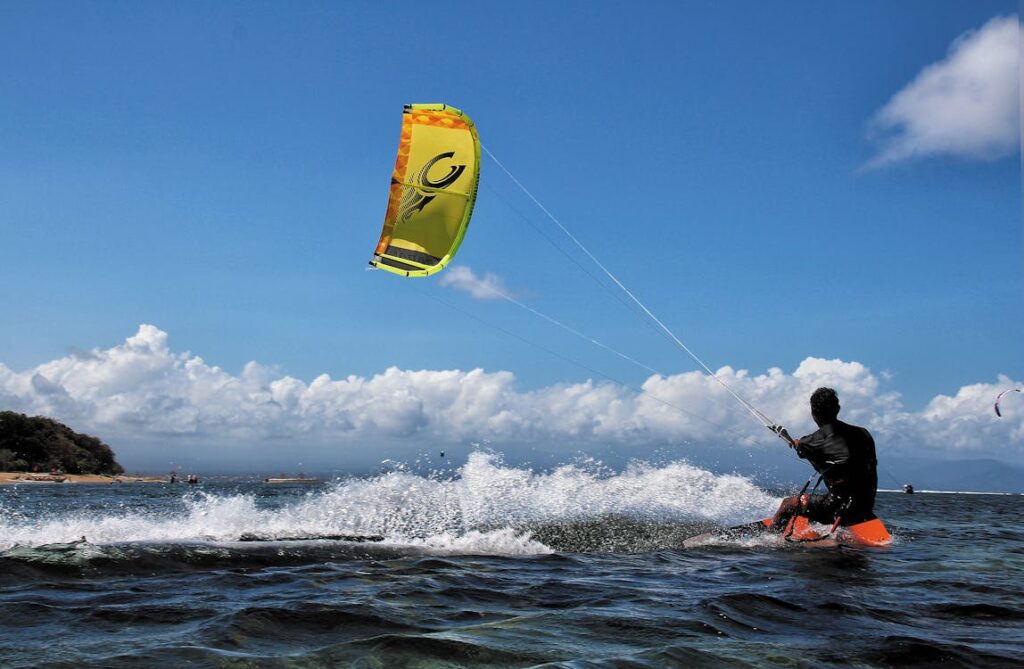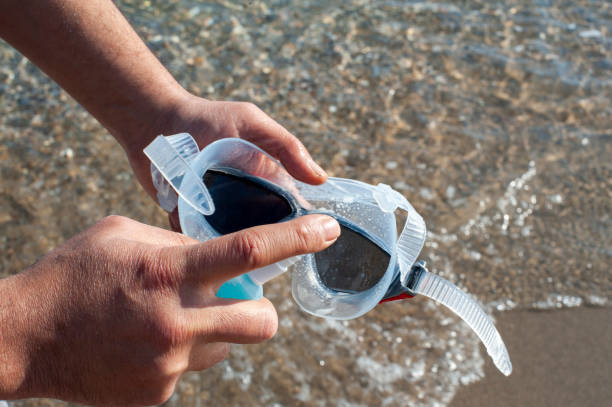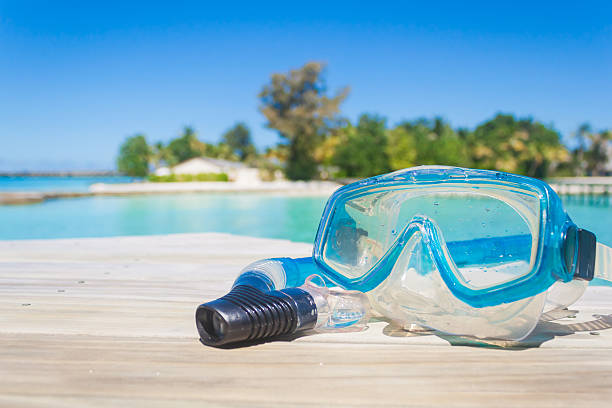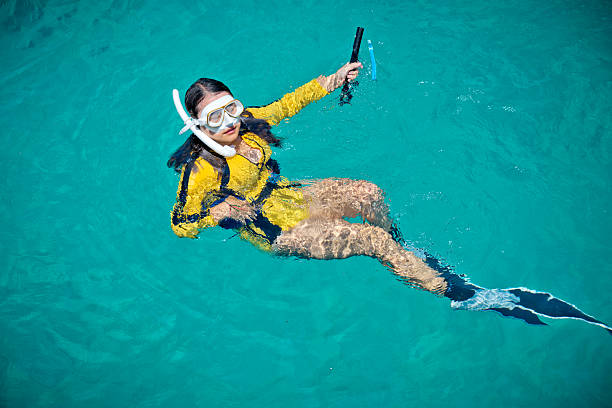Neoprenanzüge sind unverzichtbare Schwimmausrüstung für Wassersportler und bieten Isolierung und Schutz vor den Elementen. Das Verständnis des Zusammenhangs zwischen Neoprenanzugdicke und Wassertemperatur ist entscheidend für die Auswahl der richtigen Ausrüstung für Wasserabenteuer. Dieser Artikel über die Neoprenanzugdicken-Anleitung (in Celsius) untersucht die Feinheiten der Neoprenanzugdickenauswahl je nach Wassertemperatur und Aktivitätsart.

Erklärung zur Neoprenanzugdicke
Die Neoprenanzugdicke gibt die Dicke des Neoprenmaterials an und wird üblicherweise in Millimetern (mm) gemessen. Je dicker das Neopren, desto besser isoliert es.
Neoprendicken werden üblicherweise in Kombinationen von 3/2 mm oder 5/4/3 mm angegeben. Die erste Zahl gibt die Dicke des Neoprens im Rumpfbereich an, während die nachfolgenden Zahlen die Dicke in den Gliedmaßen darstellen.
Wassertemperatur, Wassertiefe, Aktivitätsdauer und individuelle Kältetoleranz beeinflussen oft die Wahl der Neoprenanzugdicke. Daher ist es hilfreich, diese Faktoren zu kennen, um den idealen Neoprenanzug auszuwählen.

Empfohlene Neoprenanzugdicke je nach Wassertemperatur
Dickere Neoprenanzüge bieten zwar eine bessere Isolierung, können aber auch die Bewegungsfreiheit einschränken. Daher ist es wichtig, die richtige Balance zu finden. Verschiedene Aktivitäten bei unterschiedlichen Temperaturen können unterschiedliche Neoprenanzugdicken erfordern, um den jeweiligen Bedürfnissen und Bedingungen gerecht zu werden.
Warmes Wasser (über 77 °F oder 24 °C)
Neoprenanzüge mit einer Dicke von 1 mm bis 3 mm eignen sich für warmes Wasser, beispielsweise in tropischen Klimazonen. Diese dünneren Anzüge schützen vor leichten Kratzern und Quallenstichen und bieten gleichzeitig Bewegungsfreiheit bei Aktivitäten wie Schnorcheln und Schwimmen.
Mäßige Wassertemperatur (15–21 °C)
Für gemäßigte Wassertemperaturen zwischen 15 und 25 °C empfehlen sich Neoprenanzüge mit einer Dicke von 3 bis 5 mm. Diese Anzüge bieten ausreichende Isolierung zum Surfen, Windsurfen und Kiteboarden in kühleren Küstengewässern.
Kaltes Wasser (unter 60 °F oder 15 °C)
Bei kälteren Wassertemperaturen unter 15 °C sind dickere Neoprenanzüge erforderlich, um die Körperwärme zu halten und Unterkühlung zu vermeiden. Eine Kaltwasser-Neoprenanzugdicke von 5 mm bis 7 mm oder mehr bietet die nötige Isolierung für Aktivitäten wie Tauchen und Freiwasserschwimmen in kälteren Klimazonen.
Welche Neoprenanzugdicke brauche ich?
Bei der Vorbereitung auf Wasserabenteuer stellt sich oft die grundlegende Frage: Welche Neoprenanzugdicke brauche ich? Ob Wellenreiten, Tauchen oder Paddeln auf ruhigen Gewässern – der richtige Neoprenanzug kann den entscheidenden Unterschied für Komfort und Vergnügen ausmachen. Generell erfordern unterschiedliche Aktivitäten unterschiedliche Neoprenanzugdicken. Wir gehen der Frage nach und lüften die Geheimnisse der Neoprenanzugdicke für Ihren nächsten Wasserausflug.
Leitfaden zur Dicke von Neoprenanzügen beim Windsurfen und Surfen
Surf-Neoprenanzüge bieten Wärmeisolierung, Abriebfestigkeit und Flexibilität, sodass Surfer in kaltem Wasser warm und beweglich bleiben und gleichzeitig vor der Reibung durch Surfbretter geschützt sind.
| Wassertemperatur | Neoprenanzugdicke | Neoprenanzugtyp | Stiefeletten | Handschuhe | Haube |
| Unter 10 °C (50 °F) | 6/5 mm oder 7 mm | Ganzanzug | 5 mm erforderlich | 5 mm erforderlich | 5 mm erforderlich |
| 10–14 °C (50–57 °F) | 5/4 mm | Ganzanzug | 5 mm empfohlen | 5 mm empfohlen | 3 mm empfohlen |
| 14–18 °C (57–64 °F) | 4/3 mm | Ganzanzug | 3 mm Optional | 3 mm Optional | 3 mm Optional |
| 18–21 °C (64–70 °F) | 3/2 mm | Ganzanzug | 3 mm Optional | 2 mm Optional | 2 mm Optional |
| 21–24 °C (70–75 °F) | 2 mm | Springsuit | Nicht erforderlich | Nicht erforderlich | Nicht erforderlich |
| Über 24 °C (75 °F) | 1 mm oder Rashguard | Top/Shorty | Nicht erforderlich | Nicht erforderlich | Nicht erforderlich |
Leitfaden zur Dicke von Neoprenanzügen beim Sporttauchen
Ähnlich wie beim Surfanzug sorgt die Wahl einer geeigneten Neoprenanzugdicke beim Tauchen dafür, dass die Taucher warm bleiben, einen neutralen Auftrieb behalten und bei Unterwassererkundungen vor Gefahren im Meer geschützt sind.
| Wassertemperatur | Neoprenanzugdicke | Neoprenanzugtyp | Stiefeletten | Handschuhe | Haube |
| Unter 10 °C (50 °F) | 7 mm oder dicker | Ganzanzug | 5 mm erforderlich | 5 mm erforderlich | 5 mm erforderlich |
| 10–16 °C (50–61 °F) | 7 mm oder 5 mm | Ganzanzug | 5 mm empfohlen | 3 mm empfohlen | 3 mm empfohlen |
| 16–21 °C (61–70 °F) | 5 mm | Ganzanzug | 3 mm Optional | 3 mm Optional | 3 mm Optional |
| 21–24 °C (70–75 °F) | 3-5 mm | Ganzkörperanzug/Springanzug | Optional | Optional | Optional |
| Über 24 °C (75 °F) | 3 mm oder weniger | Springsuit/Shorty | Nicht erforderlich | Nicht erforderlich | Nicht erforderlich |
Leitfaden zur Dicke von Neoprenanzügen beim Freitauchen
Neoprenanzüge für das Freitauchen verbessern die Hydrodynamik und bieten Flexibilität, damit Freitaucher die Wärme behalten, ihre Bewegungen optimieren und die Tauchzeiten in unterschiedlichen Tiefen verlängern können.
| Wassertemperatur | Neoprenanzugdicke | Neoprenanzugtyp | Stiefeletten | Handschuhe | Haube |
| Unter 18 °C (64 °F) | 5 mm oder dicker | Ganzanzug | 5 mm erforderlich | 3 mm Optional | 3 mm Optional |
| 18–22 °C (64–72 °F) | 3-5 mm | Ganzkörperanzug/Springanzug | Optional | Optional | Optional |
| 22–24 °C (72–75 °F) | 2-3 mm | Springsuit/Shorty | Nicht erforderlich | Nicht erforderlich | Nicht erforderlich |
| Über 24 °C (75 °F) | 1-2 mm oder keine | Rashguard | Nicht erforderlich | Nicht erforderlich | Nicht erforderlich |
Leitfaden zur Dicke von Neoprenanzügen für das Schwimmen und Schnorcheln im offenen Wasser
Neoprenanzüge für das Freiwasserschwimmen können Schwimmern helfen, Wärme, Auftrieb und Leistungsfähigkeit zu erhalten, während sie lange Strecken im offenen Wasser zurücklegen. Außerdem Neoprenanzüge zum Schnorcheln sorgen dafür, dass Schnorchler warm bleiben, vor UV-Strahlen geschützt sind und Auftrieb haben, während sie Korallenriffe und Meereslebewesen nahe der Oberfläche erkunden.
| Wassertemperatur | Neoprenanzugdicke | Neoprenanzugtyp | Stiefeletten | Handschuhe | Haube |
| Unter 18 °C (64 °F) | 3-5 mm | Ganzanzug | Optional | Optional | Optional |
| 18–24 °C (64–75 °F) | 2-3 mm | Springsuit/Shorty | Nicht erforderlich | Nicht erforderlich | Nicht erforderlich |
| Über 24 °C (75 °F) | 1-2 mm oder weniger | Rashguard | Nicht erforderlich | Nicht erforderlich | Nicht erforderlich |
Leitfaden zur Dicke von Triathlon-Neoprenanzügen
Neoprenanzüge für Triathlons ermöglichen es Triathleten, sich warm zu halten, den Widerstand zu verringern und sich während der Schwimmabschnitte von Wettkämpfen effizient durch das Wasser zu bewegen.
| Wassertemperatur | Neoprenanzugdicke | Neoprenanzugtyp | Stiefeletten | Handschuhe | Haube |
| Unter 18 °C (64 °F) | 3-5 mm | Ganzanzug | Nicht erforderlich | Nicht erforderlich | Nicht erforderlich |
| 18–24 °C (64–75 °F) | 2-3 mm | Springsuit/Shorty | Nicht erforderlich | Nicht erforderlich | Nicht erforderlich |
| Über 24 °C (75 °F) | 1-2 mm oder weniger | Rashguard | Nicht erforderlich | Nicht erforderlich | Nicht erforderlich |
Leitfaden zur Dicke von Kiteboarding-Neoprenanzügen
Neoprenanzüge fürs Kiteboarding bieten Aufprallschutz, sodass Kiteboarder warm und vor Stößen geschützt bleiben und beweglich bleiben, während sie die Windkraft für aufregende Fahrten auf dem Wasser nutzen.
| Wassertemperatur | Neoprenanzugdicke | Neoprenanzugtyp | Stiefeletten | Handschuhe | Haube |
| Unter 16 °C (61 °F) | 5/4 mm oder dicker | Ganzanzug | 5 mm erforderlich | 5 mm empfohlen | 3 mm empfohlen |
| 16–21 °C (61–70 °F) | 4/3 mm oder 3/2 mm | Ganzanzug | 3 mm Optional | 3 mm Optional | 3 mm Optional |
| 21–24 °C (70–75 °F) | 3/2 mm | Springsuit | Optional | Optional | Optional |
| Über 24 °C (75 °F) | 2/1 mm oder weniger | Springsuit/Top | Nicht erforderlich | Nicht erforderlich | Nicht erforderlich |
Leitfaden zur Dicke von Neoprenanzügen für Kajakfahren, Wakeboarden und Stand-Up-Paddleboarding (SUP)
Neoprenanzüge fürs Kajakfahren schützen Kajakfahrer vor Reibung und Stößen und ermöglichen komfortables Manövrieren bei unterschiedlichen Wasserbedingungen. Beim Wakeboarden federn sie Stürze ab und ermöglichen wendige Manöver hinter Booten. Beim SUP sind Paddleboarder vor UV-Strahlung geschützt und können sowohl in ruhigem als auch in unruhigem Wasser wendig paddeln.
| Wassertemperatur | Neoprenanzugdicke | Neoprenanzugtyp | Stiefeletten | Handschuhe | Haube |
| Unter 16 °C (61 °F) | 5/4 mm oder dicker | Ganzanzug | 5 mm erforderlich | 5 mm empfohlen | 3 mm empfohlen |
| 16–21 °C (61–70 °F) | 4/3 mm oder 3/2 mm | Ganzanzug | 3 mm Optional | 3 mm Optional | 3 mm Optional |
| 21–24 °C (70–75 °F) | 3/2 mm oder 2 mm | Springsuit/Shorty | Optional | Optional | Optional |
| Über 24 °C (75 °F) | 2/1 mm oder weniger | Springsuit/Top | Nicht erforderlich | Nicht erforderlich | Nicht erforderlich |
Abschluss
Dieser Artikel über die Neoprenanzugdicken-Anleitung (Celsius) hilft Wassersportlern, ihren Spaß und ihre Leistung auf dem Wasser zu maximieren, indem sie die individuellen Anforderungen jeder Aktivität verstehen und die passende Neoprenanzugdicke auswählen. Verschiedene Wassersportarten erfordern Neoprenanzüge, die auf spezifische Anforderungen wie Wärmeschutz, Flexibilität, Auftrieb und Komfort zugeschnitten sind. Ob Surfen, Tauchen oder Paddeln – die Wahl des richtigen Neoprenanzugs sorgt für Komfort, Sicherheit und Selbstvertrauen bei allen Wasserabenteuern.
Häufig gestellte Fragen
Was ist, wenn ein Neoprenanzug zu dick ist?
Ein zu dicker Neoprenanzug kann die Bewegungsfreiheit und Flexibilität einschränken und so bequeme Wasseraktivitäten erschweren. Darüber hinaus kann eine zu dicke Schicht bei wärmeren Temperaturen zu Überhitzung führen, was zu Unbehagen und Ermüdung des Trägers führt.
Wie warm ist 3 mm Neopren?
Ein 3 mm dicker Neoprenanzug bietet eine moderate Wärmeisolierung und ist für Wassertemperaturen von ca. 18 °C bis 24 °C geeignet. Er bietet Wärme und Komfort bei milden bis mäßig kühlen Temperaturen, ohne zu sperrig oder einschränkend zu sein.
Ist ein 4-mm-Neoprenanzug für den Winter geeignet?
Ein 4-mm-Neoprenanzug eignet sich je nach Wassertemperatur und Klima für den Winter. Er bietet Wärme in kälteren Gewässern, typischerweise zwischen 13 °C und 18 °C. Bei extremer Kälte unter 10 °C kann jedoch ein dickerer Neoprenanzug oder zusätzliche Thermoschichten für ausreichend Wärme und Komfort erforderlich sein.
Kann man im Sommer einen 4/3 Neoprenanzug tragen?
Auf jeden Fall! Ein 4/3-Neoprenanzug eignet sich im Allgemeinen für Wassertemperaturen zwischen 13 °C und 21 °C. Während er in kühleren Sommergewässern oder am frühen Morgen oder Abend ausreichend Wärme spendet, kann er sich in heißeren Klimazonen oder während der Mittagshitze zu warm anfühlen.



